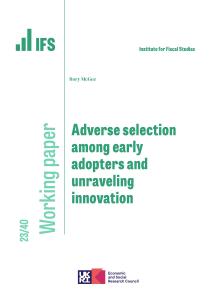This commentary was published in the Local Government Chronicle online on 28 April 2015 and in print on 30 April 2015 and is reproduced here in full with permission.
The flagship announcement in the Conservative party manifesto was a major extension of right-to-buy (in England) to cover 1.3 million housing association tenants. The Conservatives also announced a second, distinct policy of requiring local authorities to sell their most expensive properties as they become vacant, which they estimate would raise £4.5bn a year.
Part of the revenue raised from sales of expensive local authority properties would be used to compensate housing associations for having to sell their assets below market value. The remainder would fund a commitment to replace properties sold with new properties with the same number of bedrooms within the same local authority area, and to create a £1bn ‘brownfield regeneration fund’.
While the upfront cost of extending right-to-buy might be covered by sales of expensive local authority properties, by selling public assets to fund a giveaway the policy would ultimately worsen the UK’s underlying public finance position. Sales of expensive local authority properties are in part a way of funding right-to-buy discounts. In addition, though, the policy is motivated by the idea that local authorities could house more people in social housing if they cashed in their most expensive properties to fund new construction in cheaper areas.
There is of course a trade-off here: while selling expensive properties might expand the social housing stock, it would reduce the availability of social housing in the most expensive areas, creating clearer divisions between areas where richer and poorer households are located.
There are considerable uncertainties surrounding the costings behind these policies. First, the Conservatives have not published any estimates of the cost of extending right-to-buy: much depends on take-up, but the cost could run into billions over the next parliament.
Second, although they estimate that sales of expensive properties would raise £4.5bn per year, there are unexplained differences between this number and the only published analysis of a similar policy in a report published by Policy Exchange in 2012.
Finally, there is uncertainty over whether a future Conservative government would be able to deliver on its commitment to replace sold properties without additional funds. Local authorities would only receive a fraction of sales receipts – namely, what is left after funding right-to-buy and the brownfield regeneration fund.
Replacements would have to be built at a lower total cost (for example, in cheaper areas or to lower quality standards) and/or through borrowing. Given restrictions on local authority borrowing, receipts could be channelled to housing associations in the same area, which may be better placed to borrow on the private market.
The coalition’s less-than-impressive record in delivering replacement housing under the existing right-to-buy provides further cause for scepticism. There is a risk that these policies would lead to a further depletion of the social housing stock – something the proposal explicitly seeks to avoid.








